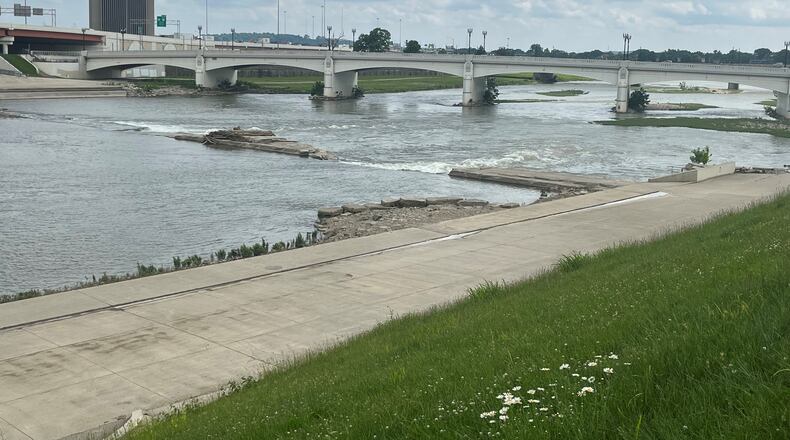“We want to continue to involve the neighborhoods in the evolution of designs as we go forward,” Scarff said. “We didn’t just blast forward and finish [the projects]; we put them on pause. And, as COVID calms down, we can reconnect with people.”
Neighborhood feedback was a key component in the plans for a park-over-the-river between the Third Street Bridge and Wolf Creek Bridge that were announced in March, according to Scarff. The ongoing project is aimed at connecting the city on both sides of the river. Sunrise and Sunset MetroParks would be linked by the Unity Bridge that will have garden beds and horticulture, braided paths and gathering spaces.
“This segment of The Great Miami River on the west side of downtown has been kind of that historical divide between East and West because we remain a highly segregated city,” Scarff said. “Connecting the two will transform the river from that place that divides us to the place where our community comes together.”
Scarff said another important aspect of the project is highlighting the Great Miami River itself. Unity Bridge will have an opening in the middle where parkgoers can look down at the water and gain access to the river through staircases. The design will allow for the river and the city to “flow into each other” and remind the community of the river’s ecological importance.
MetroParks plans to make improvements to Sunrise Park with several projects before Sunset MetroPark is built and connected by the park-over-the-river. The Garden Club of Dayton has partnered with MetroParks to build the Centennial Overlook, the first phase of the project, this summer. The club is celebrating its 100th year by sponsoring the project that will include an overlook, a mural leading down the stairs to the river and demonstration gardens.
Bikeways linking the riverfront below the Dayton Art Institute at Monument Avenue to West Third Street are expected to be built in 2023 as the next part of the Dayton Riverfront Plan.
Nine community partners came together to create the plan. Their hope is to stimulate the neighborhoods and promote economic redevelopment, according to Scarff.
“These neighborhoods have long been hit so hard by the 2008 housing collapse, hit so hard by COVID,” Scarff said. “What we want to see here as we invest in these two parks is these neighborhoods beginning to come together and pull themselves up and return to the thriving neighborhoods that they were in the 70s and 80s.”
Credit: Tom Gilliam
Credit: Tom Gilliam
About the Author


